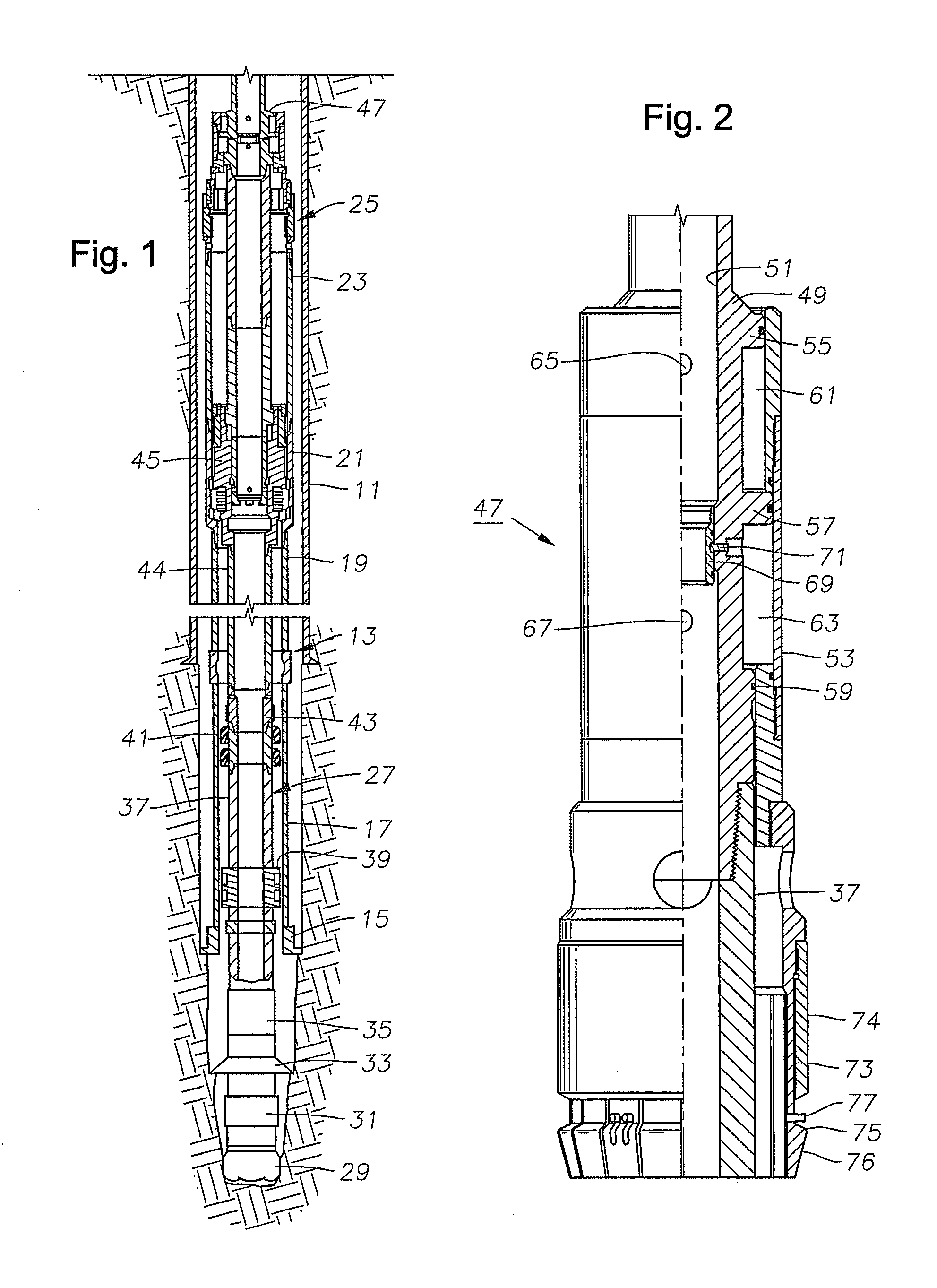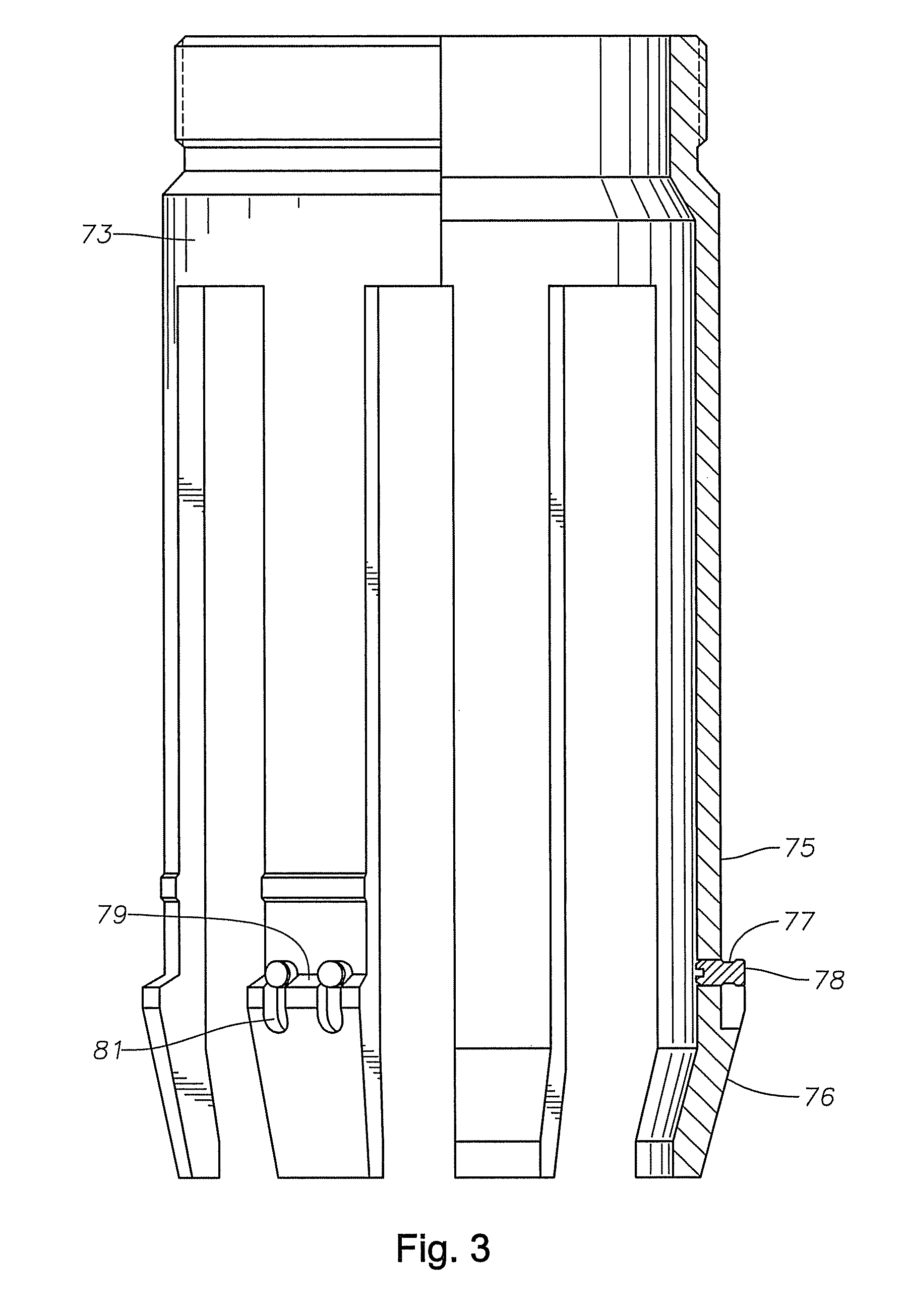Well tool with shearable collet
a technology of collet and running tool, which is applied in the direction of drilling casings, drilling pipes, and accessories for wells, etc., can solve the problems of limiting the length of the liner, the length of the drilled hole, and the inability to retrieve components, so as to limit the axial movement
- Summary
- Abstract
- Description
- Claims
- Application Information
AI Technical Summary
Benefits of technology
Problems solved by technology
Method used
Image
Examples
second embodiment
[0053]A second embodiment is illustrated in FIGS. 14-16. Liner hanger control tool 103 is the same as liner hanger control tool 47 of FIG. 2 and releasable connects to a liner hanger 104 that is the same as liner hanger 25 of FIG. 7. An outer housing 105 of liner hanger control tool 103 encloses a mandrel 107, which connects into a drill pipe string such as drill pipe string 37 (FIG. 2). A passage 109 extends through mandrel 107 and the drill pipe string. An external sleeve 111 is secured by threads to outer housing 105 and extends into the upper end of liner hanger housing 113. Slips 115 are movable carried within windows in liner hanger housing 113.
[0054]A collet cage 117 having collet windows 119 is movable and supports a collet 121. Collet cage 117 is the same as collet cage 83 (FIG. 6). Collet 121 has fingers 123 attached to flexible depending bands, which bias fingers 123 radially outward. Fingers 123 may be located within collet windows 119. Collet 121 is constructed the same...
first embodiment
[0056]The embodiment of FIGS. 14-16 operates in the same manner as the first embodiment, differing only in the location of shear pins 127. As mentioned, FIG. 14 shows the run-in and drilling position. The weight of the drill string and liner string below mandrel 107 is supported by mandrel 107, not by collet 121. When liner hanger control tool 103 sets liner hanger 104, it will appear as in FIG. 15, with shear pin 127 still unsheared. Liner control tool outer housing 105, along with external sleeve 111, collet cage 117 and collet 121 have moved upward in unison relative to mandrel 107. Liner hanger housing 113, which is attached to the upper end of the liner string, remains stationary. This movement causes collet fingers 123 to lift slips 115, which forces them radially outward to the set position of FIG. 15. Then, slacking weight off the drill pipe string will cause slips 115 to grip the casing, supporting the weight of the liner string.
[0057]Continued upward force is applied on sh...
PUM
 Login to View More
Login to View More Abstract
Description
Claims
Application Information
 Login to View More
Login to View More - R&D
- Intellectual Property
- Life Sciences
- Materials
- Tech Scout
- Unparalleled Data Quality
- Higher Quality Content
- 60% Fewer Hallucinations
Browse by: Latest US Patents, China's latest patents, Technical Efficacy Thesaurus, Application Domain, Technology Topic, Popular Technical Reports.
© 2025 PatSnap. All rights reserved.Legal|Privacy policy|Modern Slavery Act Transparency Statement|Sitemap|About US| Contact US: help@patsnap.com



